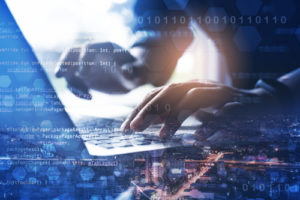The work of engineers is often mission critical, from ensuring that life-saving medical equipment can function properly, to providing infrastructure for 5G communications systems, to monitoring national security and defense. Performing this work from home during a global pandemic with limited access to labs and the essential technology required to do our jobs is the new reality for most engineers. We are navigating a fully-remote working environment, attempting to advance work and accelerate progress, while physically separated from our teams and necessary equipment.
Handling and supporting a remote engineering workforce is untested territory; but, as the work of engineers hinges on testing, monitoring, and calibrating, how we get through this time in individual environments requires new ways of approaching the work we’re accustomed to performing together in labs. While we adapt to the new normal of remote engineering, creative workarounds for common constraints have been developed.
Similar challenges also now face engineering students at universities around the world. Within Electrical and Computer Engineering (ECE) studies, a hands-on and technical discipline that usually requires electronic measurement instrumentation as part of the learning experience, the question of remote learning takes on added complexity.
Any engineer can attest to how critical it is as a student to have real life, tactile instrument experience. That experience isn’t just necessary for a well-rounded education, it’s also essential to preparing students for a real career in the engineering industry. Using a Test and Measurement Instrument yourself is the best way to gain a deeper understanding of how and why a measurement works (vs. simply what a measurement or equation is), which better prepares the student to enter the industry. But full teaching lab equipment can be expensive, and most labs only have a few bench setups for students to share, meaning the traditional teaching methods are not possible for the foreseeable future.
The creative solutions now being used by many engineers to improve their ability to work from home could also be incorporated into university curriculums to improve the remote learning experience for ECE educators and students. As theoretical knowledge can only get you so far when it’s time to develop and test a prototype, it needs to be supplemented by practical experience.
Analyze measurement data off-instrument.
Using compatible remote desktop software can allow engineers to fully view and control a scope remotely, and more effectively collaborate. This can especially come in handy with performance scopes that already contain relevant datasets, proper software and analysis setup, or partially completed projects. From scaling and measuring, to multiscope analysis, bus decoding, power analysis and jitter analysis, the right software is an accessible option to keep work moving outside of the lab.
Analyze collaboratively with remote colleagues (or, students).
By using shared datasets and software, engineers can work with colleagues by sending entire datasets versus just static screenshots. With the right ecosystem, one can take that collaboration “into the Cloud” for an easy-to-use browser environment, where data can be shared, augmented and optimized seamlessly. The technology is evolving to where even a standard mobile device or smartphone can be paired with an instrument to share waveforms, measurements, screen shots and more.
Remotely access and control instruments.
Industry-standard test and measurement devices can be used remotely. Oscilloscopes can be set up in the lab and then connected to from home. Certain oscilloscopes’ features allow engineers to remotely access and control the oscilloscope using an IP address assigned to the scope. All that’s needed is an internet connection via ethernet or access point for the oscilloscope, and a web browser on a connected computer. Other instruments, including select digital multimeters, power supplies, matrix switches, DAQs and SMUs can also be viewed and controlled remotely.
Remote work solutions for engineers engaged in testing, measuring and innovating outside of their regular workspaces is possible — with some creativity. Universities can also use these same methods to help their students in remote education settings. These new processes may still be evolving, but they can help continue to move educational experiences and professional achievements forward.
- A bungled FAFSA rollout threatens students’ college ambitions - April 19, 2024
- Using real-world tools to prepare students for the workforce - April 18, 2024
- 8 top trends in higher education to watch in 2024 - April 16, 2024

